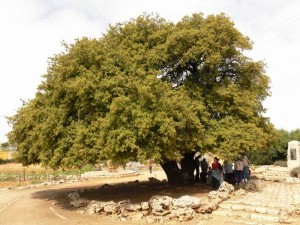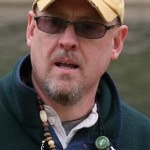by Dean Ohlman
Abram traveled through the land as far as Shechem. There he set up camp beside the oak of Moreh (Genesis 12:6). Abram moved his camp to Hebron and settled near the oak grove belonging to Mamre. There he built another altar to the Lord (Genesis 13:18).
“Remember to turn in between the big red oak and the silver maple,” I would sometimes say to Marge as directions for turning into the right driveway to a home we often visited. She, not being a tree aficionado, would simply roll her eyes and tell me the name of the cross street and signs she used as a reference point. In Abram’s time, however, it was obviously common to use trees or other natural features as reference points”especially if tents in the great outdoors were your living quarters and you were miles from a city or major settlement. Knowing the essence (names) of natural features was critical to life in his day”as it is to us today. [Oak tree photo source]
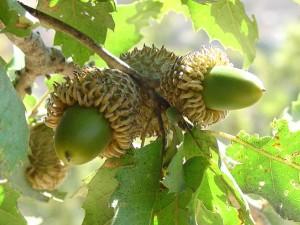 We know that naming was an important act in Old Testament times: mountains, landmarks, memorials, and especially children. But Adam had the most significant naming responsibility of all: he was asked by the Creator to name the domestic and wild animals and the birds. Henri Nouwen wrote an insightful commentary on this act of Adam that’s made the importance of naming stick with me. Having such a privilege, Nouwen said, meant that you needed to understand the essence (character, core, and soul) of what it was you were naming. Since we are on the far side of Babel, we don’t know what Adam’s names were, but we can be fairly certain that the lion-ness of lions and the duck-ness of ducks were assumed in whatever name was given [And was he also the only man to truly understand a woman?!]. Adam was clearly the first naturalist, but he probably didn’t use the common practice in naming species today: incorporating the name of the discoverer in the scientific name. Having the names of all birds and wild and domesticated animals end with adamii would not be helpful naming!
We know that naming was an important act in Old Testament times: mountains, landmarks, memorials, and especially children. But Adam had the most significant naming responsibility of all: he was asked by the Creator to name the domestic and wild animals and the birds. Henri Nouwen wrote an insightful commentary on this act of Adam that’s made the importance of naming stick with me. Having such a privilege, Nouwen said, meant that you needed to understand the essence (character, core, and soul) of what it was you were naming. Since we are on the far side of Babel, we don’t know what Adam’s names were, but we can be fairly certain that the lion-ness of lions and the duck-ness of ducks were assumed in whatever name was given [And was he also the only man to truly understand a woman?!]. Adam was clearly the first naturalist, but he probably didn’t use the common practice in naming species today: incorporating the name of the discoverer in the scientific name. Having the names of all birds and wild and domesticated animals end with adamii would not be helpful naming!
Scientific naming, however, still seeks to include some of the essence of the species, and that is helpful.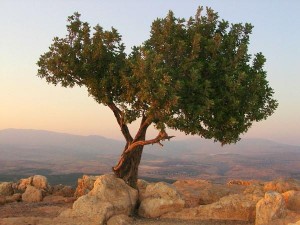 But there is something else important in naming nature that I think we miss in our age. It’s implied in the fact that even children know the names and character of Target, Wal-Mart, and MacDonald’s (sadly, also the PR “nature” of Coors, Budweiser, and Miller Light); but they don’t know much about the essence of maple, oak, and willow. They will eagerly look up the made-up name and imaginary characteristics of the latest “Made in China” Webkinz stuffed animal on the Internet, but typically will not look up the real name and actual characteristics of the trees that grow along their streets”nor are they given a reason to care.
But there is something else important in naming nature that I think we miss in our age. It’s implied in the fact that even children know the names and character of Target, Wal-Mart, and MacDonald’s (sadly, also the PR “nature” of Coors, Budweiser, and Miller Light); but they don’t know much about the essence of maple, oak, and willow. They will eagerly look up the made-up name and imaginary characteristics of the latest “Made in China” Webkinz stuffed animal on the Internet, but typically will not look up the real name and actual characteristics of the trees that grow along their streets”nor are they given a reason to care.
Children don’t care because adults don’t care. And because adults don’t care, the natural world, without which we could not live, often lacks our care and attention. If we came to understand the essence of all the natural features and living things that surround us, we would be the richer for it. And we would 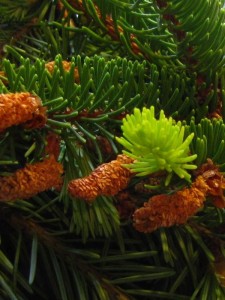 seek to protect what is threatened (another of Adam’s tasks). When you consider how significant the oaks of Moreh and Mamre were to Abram and his fellow travelers, you could also image their outrage at someone deliberately cutting them down. That oak grove of Mamre, was more than a resource. It was a cherished natural companion for years. It was important to their sense of place.
seek to protect what is threatened (another of Adam’s tasks). When you consider how significant the oaks of Moreh and Mamre were to Abram and his fellow travelers, you could also image their outrage at someone deliberately cutting them down. That oak grove of Mamre, was more than a resource. It was a cherished natural companion for years. It was important to their sense of place.
What we don’t know and understand we typically don’t care for, and what we don’t care for, we readily come to abuse. The elements of God’s natural creation are as important and significant today as they were in the days of Adam. And I believe we do still have the responsibility of knowing and understanding them: learning their names and their essence.
When we moved to our condo ten years ago, I took note of the trees that lined our drive: mostly red maples, Norway  maples, Colorado spruces, red pines, and Austrian pines. This last spring I wrote one of my Ambling posts [May 24] on the reproduction and growth process of the pines near our condo. I posted photos of their cones and their new growth. Last month, I noticed that almost all the new growth on the pines had died. I discovered that they are succumbing to two different blights, and within a couple years the 35-year-old trees will themselves die and need to be removed. And I will miss them, just like I miss the dozens of ash trees that have died all around us: victims of the invasive emerald ash-borer.
maples, Colorado spruces, red pines, and Austrian pines. This last spring I wrote one of my Ambling posts [May 24] on the reproduction and growth process of the pines near our condo. I posted photos of their cones and their new growth. Last month, I noticed that almost all the new growth on the pines had died. I discovered that they are succumbing to two different blights, and within a couple years the 35-year-old trees will themselves die and need to be removed. And I will miss them, just like I miss the dozens of ash trees that have died all around us: victims of the invasive emerald ash-borer.
Such is the burden of knowing and understanding- of naming what we are to care for. How many trees, wildflowers, birds, insects, rocks, clouds, crops, and domesticated animals in your area can you name? Do you know much about their essence? Do you care?
re-posted with permission
Dean Ohlman is a statesman of the creation care movement. You can follow his excellent work at the Wonder of Creation site.

